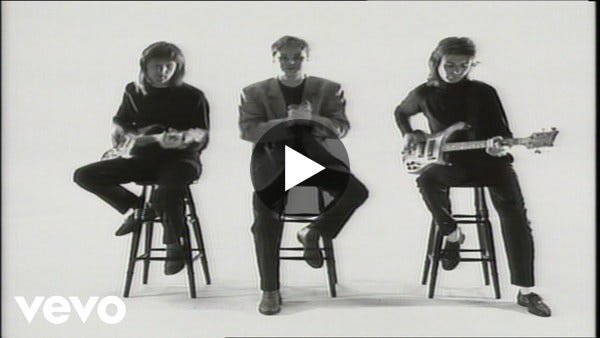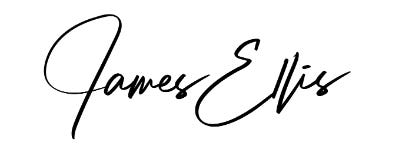Employer Brand Headlines: The "Mayor of Simpleton" Edition (#80)
Our mission: Help you understand your employer brand better and make it work for you.

In this issue
Take off the costume
Listen to exec coaching sessions
Does social impact matter?
A framework for innovation
The big idea
It feels obvious to say, but I guess I gotta say, but with a different kind of spin: Effective employer branding isn’t a costume you wear when it suits your leadership.
Right?! That’s no big claim, but when I look at so many employer branding professionals, all I see are costumers, applying rhinestones and peacock feathers as fast as they can until their brand is the fashion equivalent of Elton John signing on The Muppet Show. (For the record, there’s nothing wrong with Elton, and I will put “Goodbye Yellowbrick Road” up alongside any song the Beatles ever wrote. And I love Muppet Show. And the episode with Elton singing Crocodile Rock to fabric crocodiles is charming as hell, but do you think Elton lounges around the house making tea in that outfit?)
They are engaged in an unending (and unstrategic) chase for positives, desperate to increase Glassdoor scores and win awards. They aren’t thinking about their work as a brander, but as a marketer/advertiser: I need more people to say nice things in more places about the product in order to increase our funnel and eventually sell more! But that’s not the job.
Do you really need more applicants? Or do you need better applicants? Have you gotten in the (very bad) habit of thinking “if we need better prospects, that means we need more applicants.” If you’re searching for needles, make needles, don’t go creating bigger haystacks.
Case in point: Tesla. We know (survey data, et al) that what engineering folks want is a better work-life balance and more money. But then they list Tesla as their most desirable company, despite its good-but-not-great 3.8 Glassdoor score where the chief complaints are lack of work-life balance and mediocre pay. Here’s a company that isn’t chasing awards or scores, because they know it doesn’t matter. The only thing that matters is if you’re a believer in the bigger mission to make amazing cars.
This is a company that doesn’t wear a costume. Their outfit is the same regardless if they are going to work, going to party, or going to church: they are who they are. There’s no costume. They don’t hide their so-called “negatives” so much as embrace them. And when their CEO (of whom I am decidedly NOT a fan) goes on a podcast and smokes a joint, that’s the company: they see the “rules” that say CEOs don’t do things like that in the same way they see rules around what a car should be: out-dated thinking that needs to be re-invented. Being on Joe Rogan isn’t some misstep, it’s being true to who he is, making the companies he starts extensions of the same.
When you give candidates what they say they want, you’re chasing something you can’t provide, so you are forced to play it up as if you can offer it. When you look at the “data” that says “most people want X” you are conflating “most people” with “your targets,” as if you’d hire just anyone. When you can’t/don’t focus on what kind of person you want to hire, you end up having to try to be all things to all people. You’re putting yourself in a position where you have to put on the costume.
So look at the work you’re doing and ask, “is this a costume? Is this a little show I’m putting on to make people like us?” If so, you may see a short-term win and face a long-term loss. Because your brand won’t be coherent, even if you’ve found a way to justify the costume and props as being “within the brand guidelines.”
Headlines!
For those of you thinking about how to elevate your career and standing within your organization, the limitation is often that you don’t know what you don’t know. How does a caterpillar know how to become a butterfly? One of the secrets of good executives and leaders is that they get an executive coach. But if you’re not an exec, what would that even sound like? HBR has a podcast of nothing but executive coaching sessions and annotations. Amazing stuff.
Here’s an article on how candidates/workers view the value of CSR when considering an offer. It’s academic research, but it seems to be worth considering. The key takeaways are that while candidates want to feel good about the good their company is doing, it still is all about the money. When push comes to shove, doing good is good, but getting paid is better. But in the mix was an interesting finding: CSR for its own sake, when not attached to a clear ROI was seen as taking money off the table, money that employees could have put in their own pocket. That might be worth knowing when you partner with CSR about their efforts.
I’m not a big fan of going “all in” on digital advertising as a means of establishing and reinforcing your employer brand, but there is certainly a time and place for that kind of strategy. That said, it’s very easy to spend a LOT of money to see a return that is only useful inside the world of digital marketing. You have to map your needs to what it can provide, and those things don’t align. Ignoring the mess happening with Facebook’s over-estimating reach (and over-charging customers), here’s a great write-up of things to be wary of as you start spending money.
Do you know what’s worse than figuring out you’re wrong? When someone else does it for you. I love the idea of building a board of people around you not to cheer you own, but to offer different viewpoints, and offer areas where your thinking might be wrong. It’s frustrating, but better to have that happen in a team meeting than when you’re presenting your work to leadership.
The first goal of great employer branding is to get a stranger to understand why they might like working at your company. But how does that change when the concept of what “a job” is? Just as we had to re-think about how an employer brand is expressed when so many of us are no longer in physical proximity, what is the purpose of EB when the concept of work is changing around us. This is a great read. (h/t Hung Lee’s Recruiting Brainfood)
Connected to that is this report from NOBL on what 2020 taught us about the “state of work.” I read this as a list of all the internal challenges and concerns our candidates are facing (even when they aren’t articulating them),
The corollary to the “frog in a pot of boiling water” concept is the idea that it isn’t the big problems that kill you, it’s the tiny frustrations that turn employees and prospects into people who dislike (and bad mouth) your brand.
After last week’s deep dive into my answer to “who should own employer brand?” question (spoiler: I believe the answer is whatever drives you to a dual-citizenship status), here’s another way to look at the idea of connecting with the various stakeholders of the employer brand.
My friend Thomas has an interesting take on building an employer brand position/EVP: find the intersection between science and creativity. I saw this as a different way to address the friction between getting everyone’s buying and viewpoint without losing that singular voice. That is, how do you get avoid building a camel by committee? Empathy.
Quick hits
10 brand campaigns that took a stand on social issues
How to Create Content That Sells
Where to Begin When It’s Time to Edit Your Content
A Framework for Innovation in the COVID-19 Era and Beyond
Tip of the week
You can’t talk about the change. You need to be the change. Want everyone in your company to do a thing (use a certain job template, post an image, share a video)? Start doing it. Further, go find people who aren’t doing it and do it for them. Want them to see the value of talking to a candidate in a certain way? Re-write that job posting for them. Write that outreach email for them. Make something and put it in their hands and say, “here.” Get them to see with their own eyes that this work isn’t indulgent or soft, that it helps them do their job better. Especially early on, your brand champions will be created by hand.
Inside the fortune cookie
“How determined people seem to be to aim for exactly the same target again and again.” - Brian Eno
One last thing
And I’m going to take Clubhouse seriously for a while. Last week we had a great of folks on and covered their questions and challenges, so we’re doing it again. Got an obstacle you can’t see around or just want a professional opinion? Jump in on Tuesday 8:30 am Central.
Next month, Holland McCue and I will talk about employer brand beyond the “obvious” tools on Clubhouse. Got an idea to talk about? Hit me up!
Thanks, everyone!
Whew! That was a long one! Thanks for enjoying and sharing this newsletter.
And as always, when you reply to this email I will read your questions and comments. Is there any article I should be commenting on? A book? A podcast? Is there something you what to know? How can I help? Just reply to this email and it comes directly to me.
Cheers and thanks!
-James Ellis (LinkedIn | Twitter | Podcast | Articles)
Where the subject line came from:

XTC - Mayor Of Simpleton

By James Ellis, Employer Brand Nerd
In a sea of content, how do you stay up to date on employer branding news? How do you know what's worth reading and what's just a waste of time?
So glad you asked! Here's a weekly digest of the best content to make you smarter about employer branding, curated by James Ellis.
In order to unsubscribe, click here.
If you were forwarded this newsletter and you like it, you can subscribe here.
Powered by Revue
James Ellis, 421 W Melrose, Chicago, IL 60657




